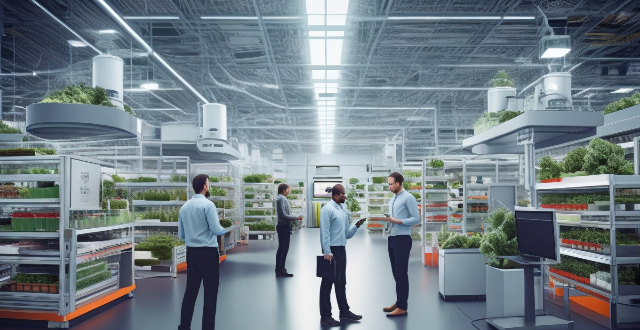HarmonyOS and Android are two major operating systems in the current mobile market, each with unique design philosophies, technical architectures, and application ecosystems. HarmonyOS emphasizes distributed technology and cross-device connectivity, striving to create an all-scenario smart life experience. In contrast, Android focuses on user experience and app ecology within single devices. Technically, HarmonyOS uses a microkernel for better security and performance, while Android is based on a Linux macrokernel, gradually improving its system security and response speed. Regarding the application ecosystem, HarmonyOS aims to build an independent ecosystem supporting exclusive apps, whereas Android boasts the world's largest app ecosystem. In terms of openness, HarmonyOS is relatively more closed, providing better system stability and security, while Android is known for its openness, allowing developers to freely customize and modify the system. Performance-wise, HarmonyOS optimizes for smoother experiences and efficient resource management across devices, while Android may face performance issues on low-end devices. Looking ahead, HarmonyOS plans to expand into various fields beyond consumer electronics, while Android continues to strengthen its position in mobile devices and invests in IoT and automotive sectors. The choice between the two systems depends on personal needs and usage scenarios.

Huawei's HarmonyOS and Google's Android are two operating systems that have significant roles in today's mobile market. They share similarities in their application in mobile devices and IoT devices, but they also exhibit substantial differences in design philosophy, technical architecture, and application ecosystem among other aspects. A detailed comparison is outlined below:
1. Design Philosophy
- HarmonyOS: The core design philosophy of HarmonyOS is centered on distributed technology and the concept of connecting everything. It aims to break the limitations of single devices, achieve seamless collaboration and resource sharing between multiple devices through distributed soft bus technology, and build an all-scenario smart life experience covering smartphones, tablets, TVs, cars, wearable devices, and more.
- Android: Initially designed for mobile devices, the Android system focuses on user experience and application ecology on single devices. Although it gradually added support for IoT devices over time, its original architecture was not specifically designed for cross-device collaboration like HarmonyOS.
2. Technical Architecture
- HarmonyOS: HarmonyOS is based on a microkernel design, emphasizing lightness and modularity, with higher security and lower latency. It adopts new technologies like ArkUI and ArkCompiler to improve application performance and development efficiency.
- Android: Android is based on a Linux macrokernel design. As the version evolved, the system complexity gradually increased, facing challenges in security and system response speed in the early stages. However, improvements after Android 10 have significantly enhanced security and performance.
3. Application Ecosystem
- HarmonyOS: Compatible with Android apps while also supporting HarmonyOS native apps. It is committed to building an ecosystem independent of Android, supporting developers to develop exclusive applications for the HarmonyOS platform through different SDKs and APIs.
- Android: Possesses the world's largest mobile application ecosystem, with a vast number of apps available for download from the Google Play Store, and a large and active developer community.
4. Openness and Closedness
- HarmonyOS: Relatively more closed in terms of openness, with Huawei having stronger control over the system. This means the HarmonyOS application ecosystem may be relatively smaller but can offer better system stability and security.
- Android: Famous for its openness, allowing developers to freely customize and modify the system. This gives Android a rich array of applications and personalized settings.
5. Performance and Efficiency
- HarmonyOS: Optimized for performance and efficiency, aiming to provide a smoother user experience. It uses a distributed architecture that can intelligently schedule and manage according to the device's resources.
- Android: May experience stuttering and performance bottlenecks on some low-end devices.
6. Future Development
- HarmonyOS: Committed to building a cross-device, cross-platform all-scenario smart life solution. It aims to become an operating system widely used in the IoT era, not just limited to consumer electronics but also including industries, transportation, energy, and more.
- Android: While continuing to maintain advantages in mobile devices, it has also increased investment in IoT and automotive fields. However, its overall architecture still centers around optimization and development with single devices at the core.
When choosing between HarmonyOS and Android, consider the following factors:
- If focusing on IoT and cross-device collaboration, HarmonyOS might be more attractive.
- For a mature app ecosystem and extensive customization requirements, Android is still a good choice.
- Considering long-term system updates and maintenance, both systems continue to evolve, but Android has a more established update mechanism.
- In terms of internationalization, Android has a broader global market support, while HarmonyOS is expanding its international presence.
- Depending on your device type, if you are using multiple Huawei devices, HarmonyOS might offer a better synchronization experience.
In summary, from the perspective of design philosophy, HarmonyOS focuses more on the interconnectivity of all things, striving to create a unified operating system across devices and platforms. In contrast, Android relies on its extensive application ecology and highly customized features to continue consolidating its market position. The choice of which operating system to use should be based on personal needs and usage scenarios.